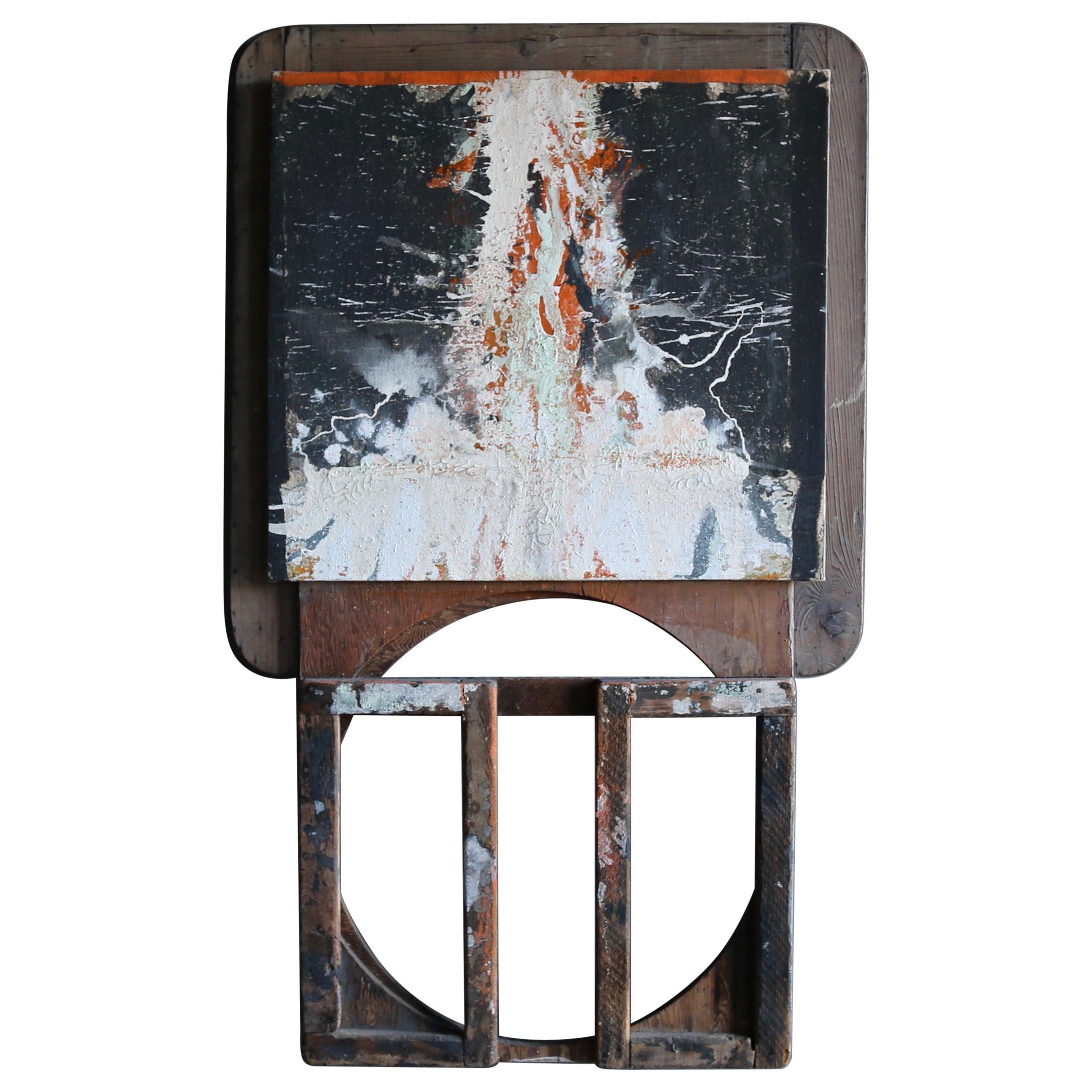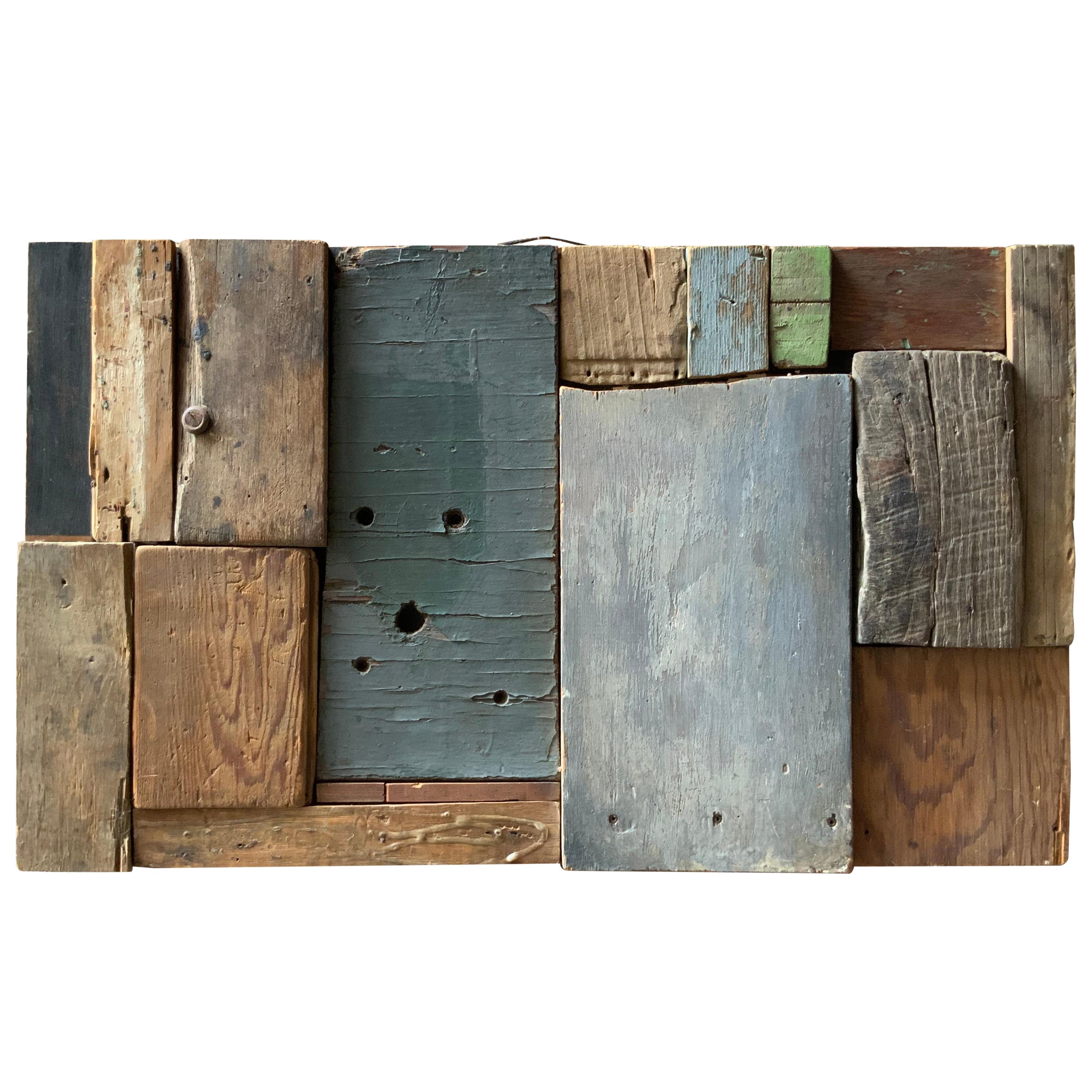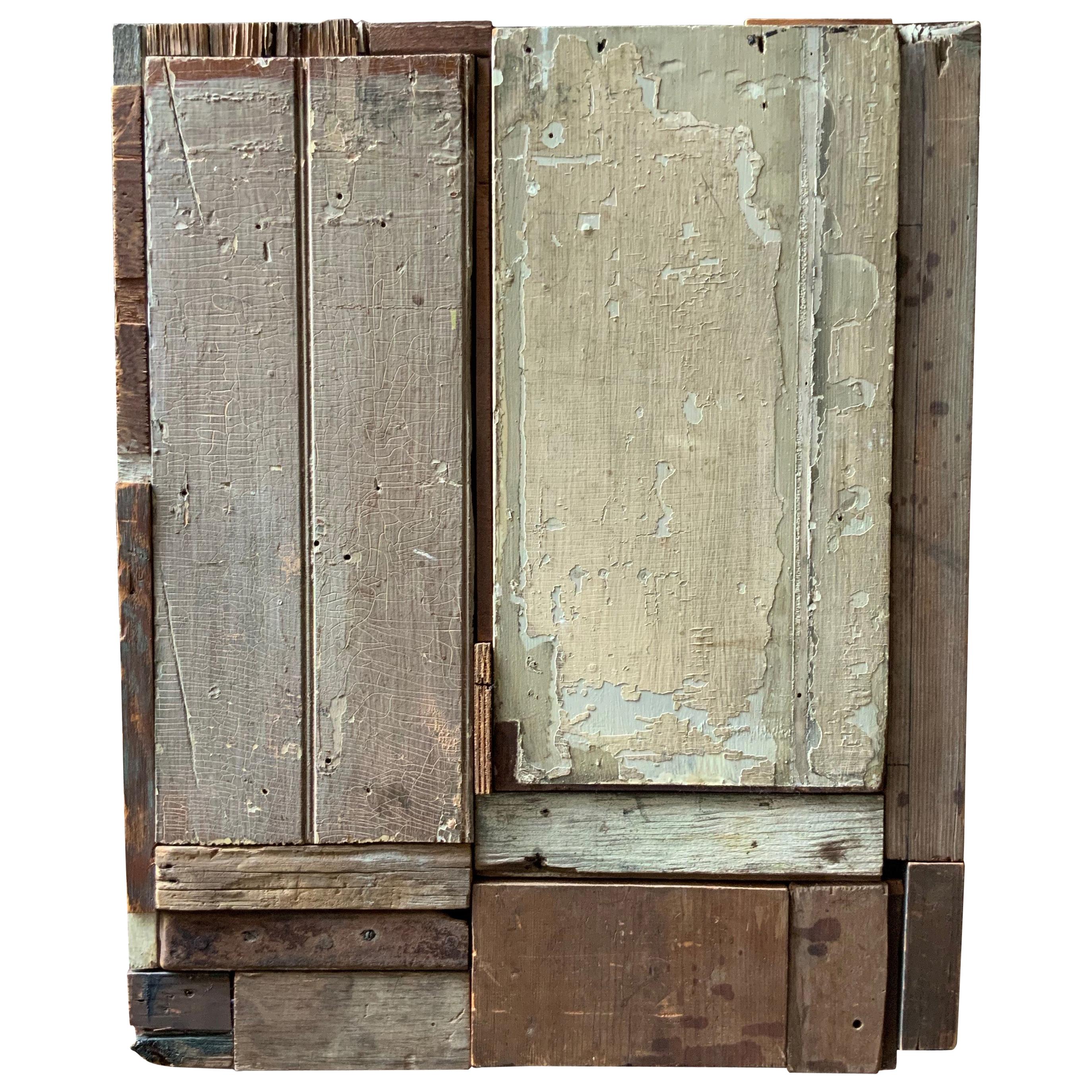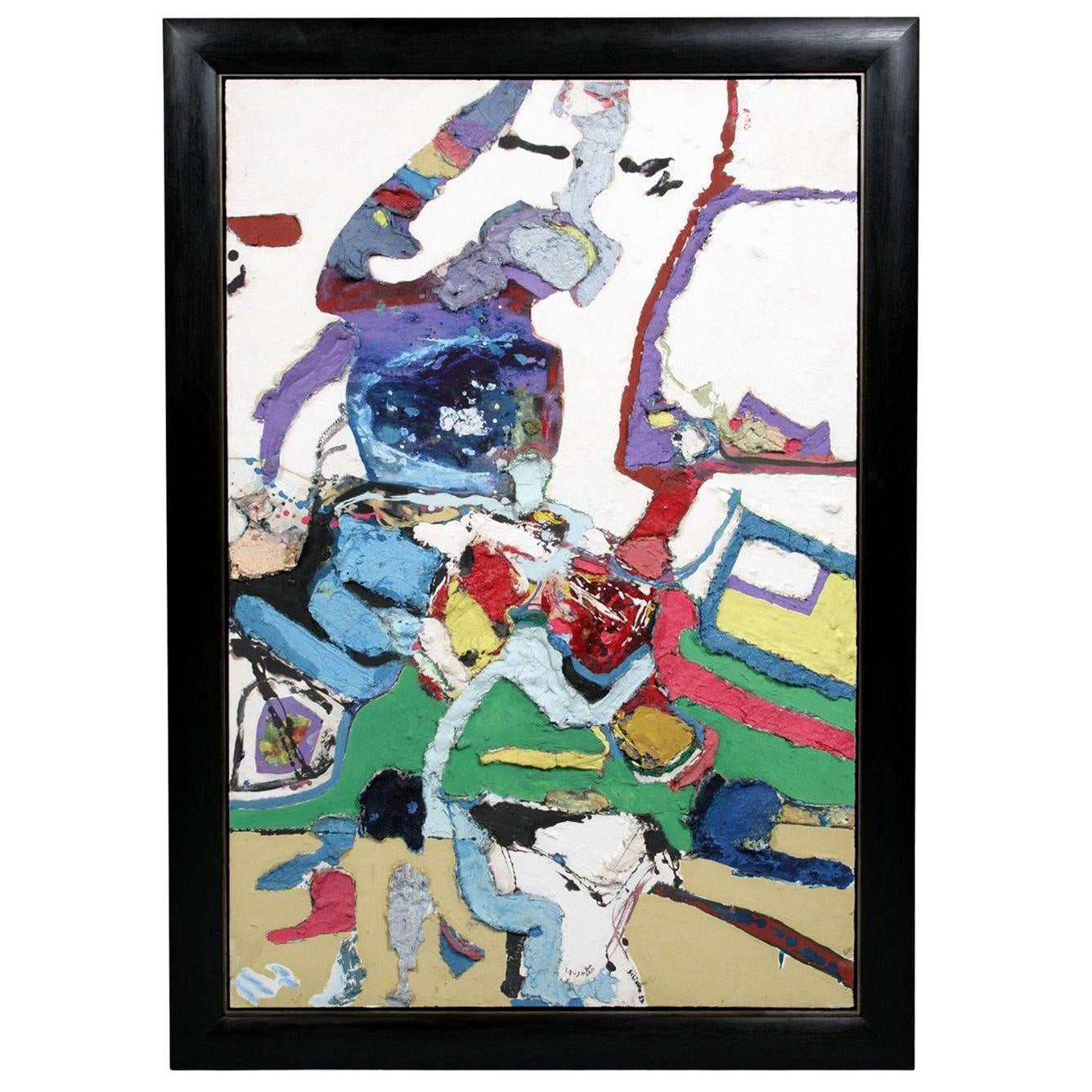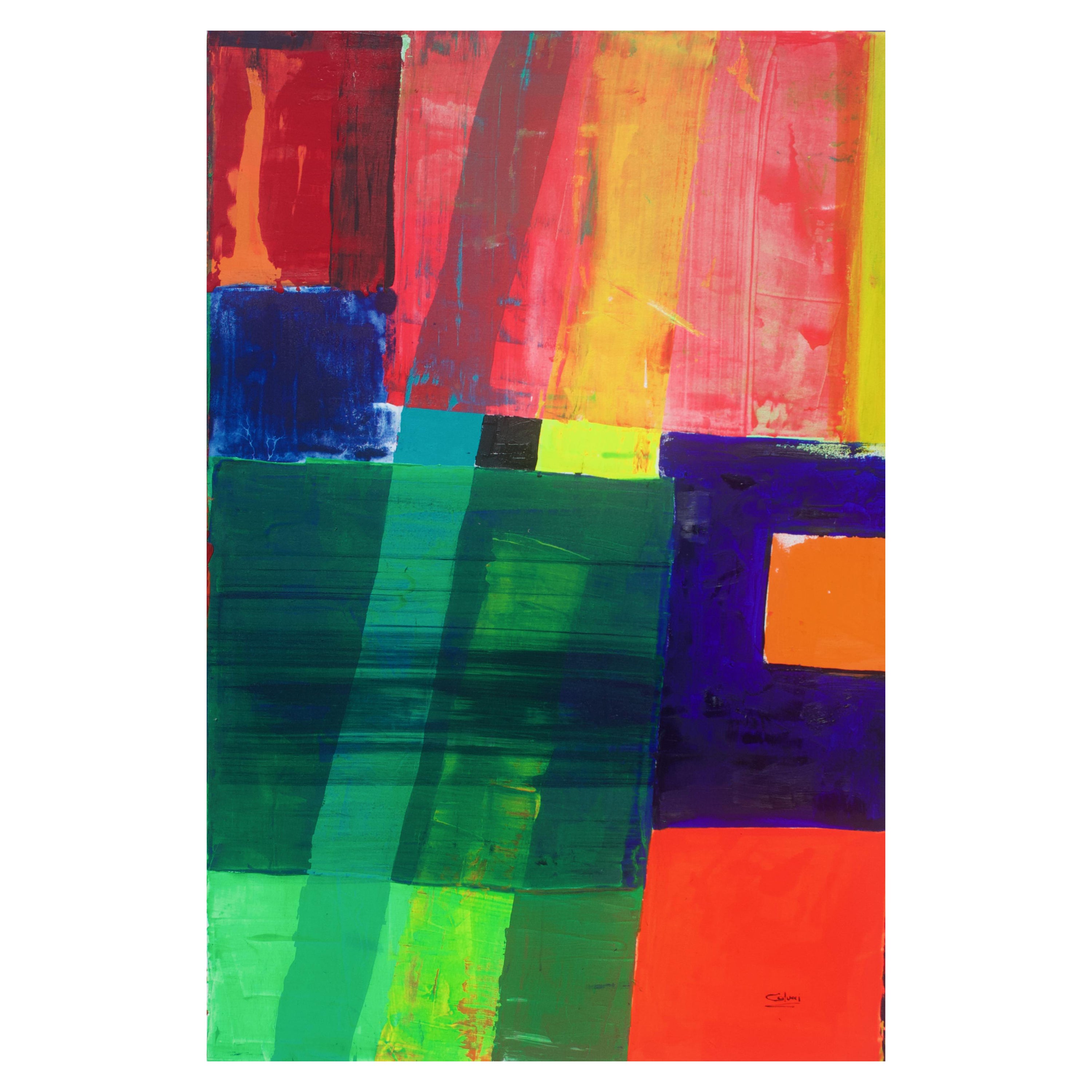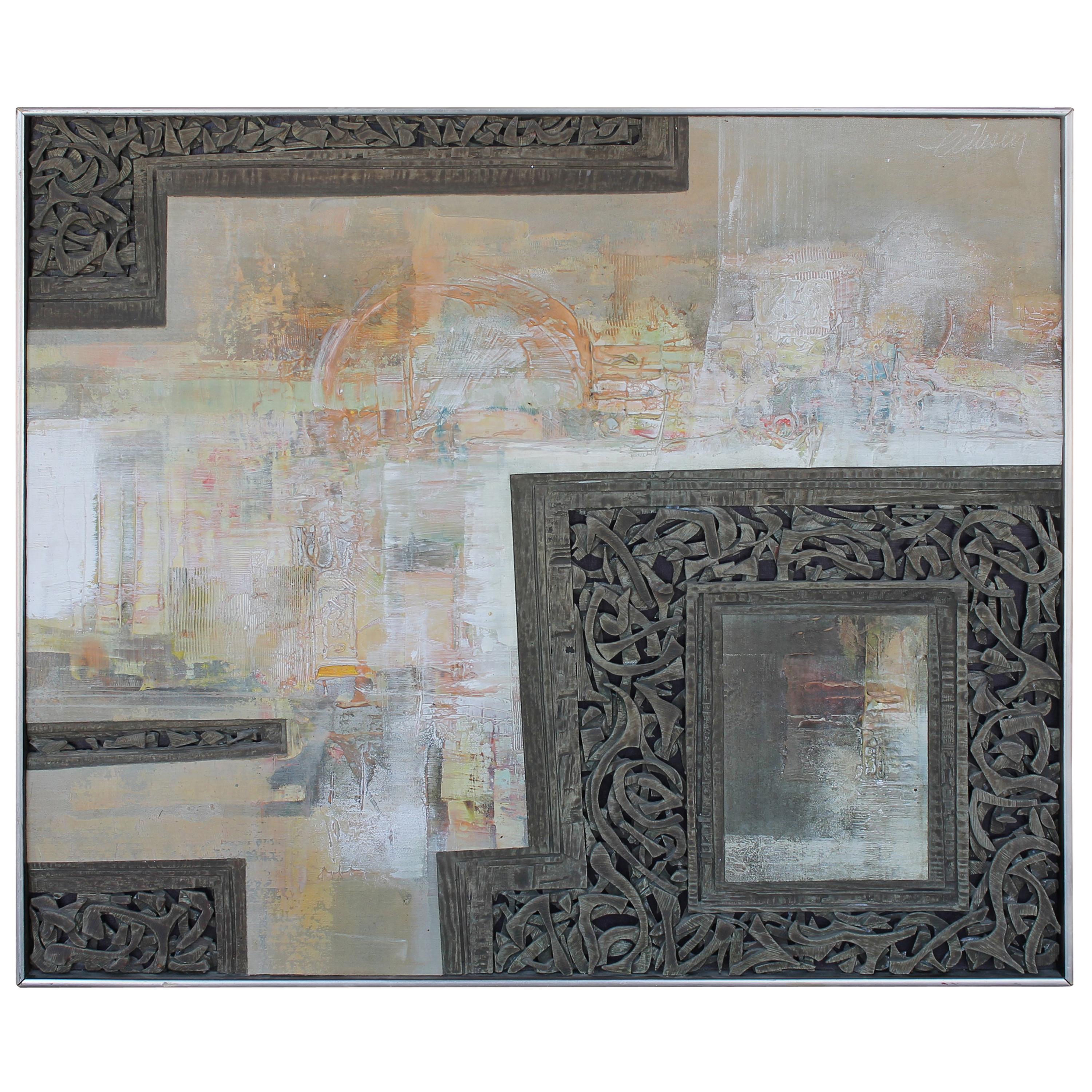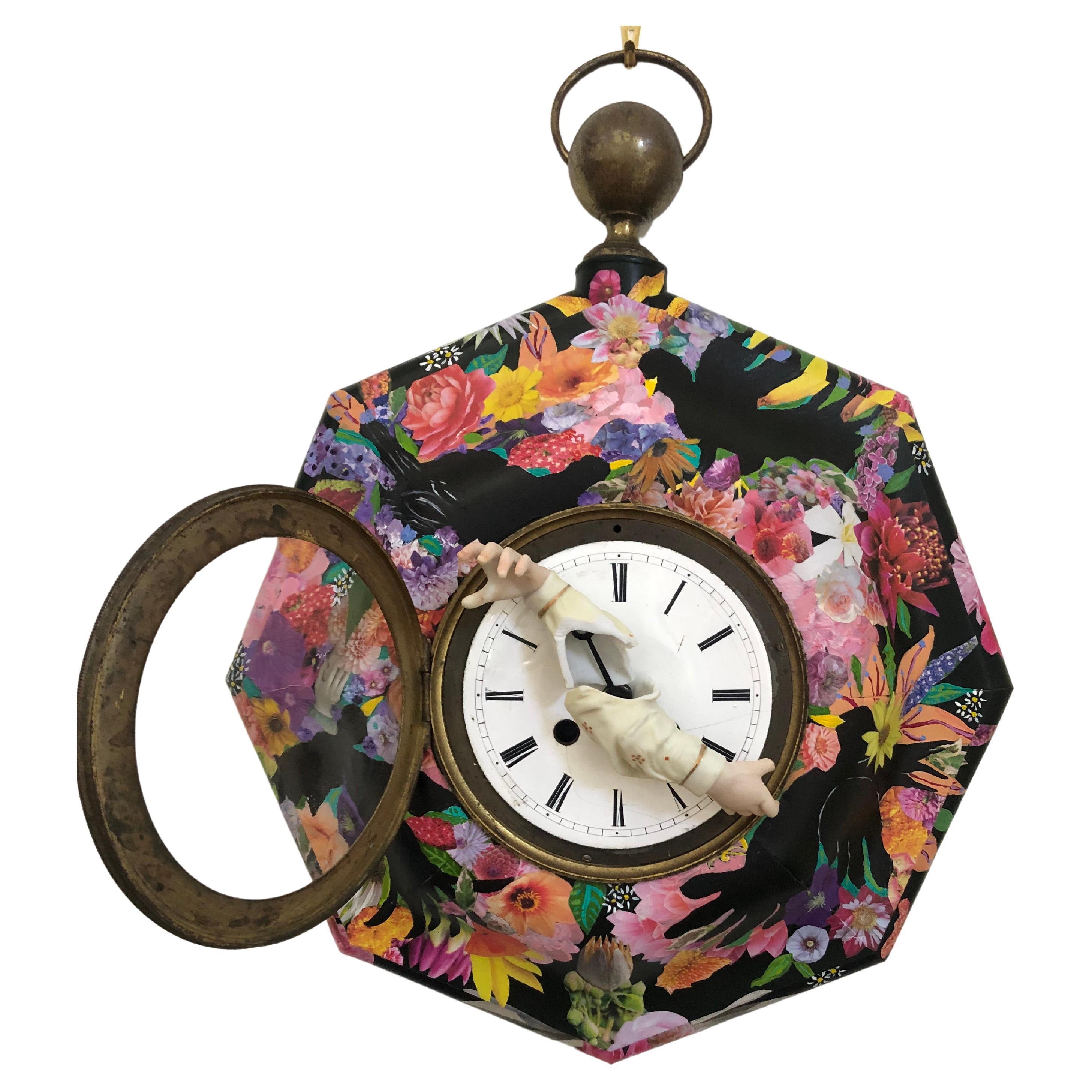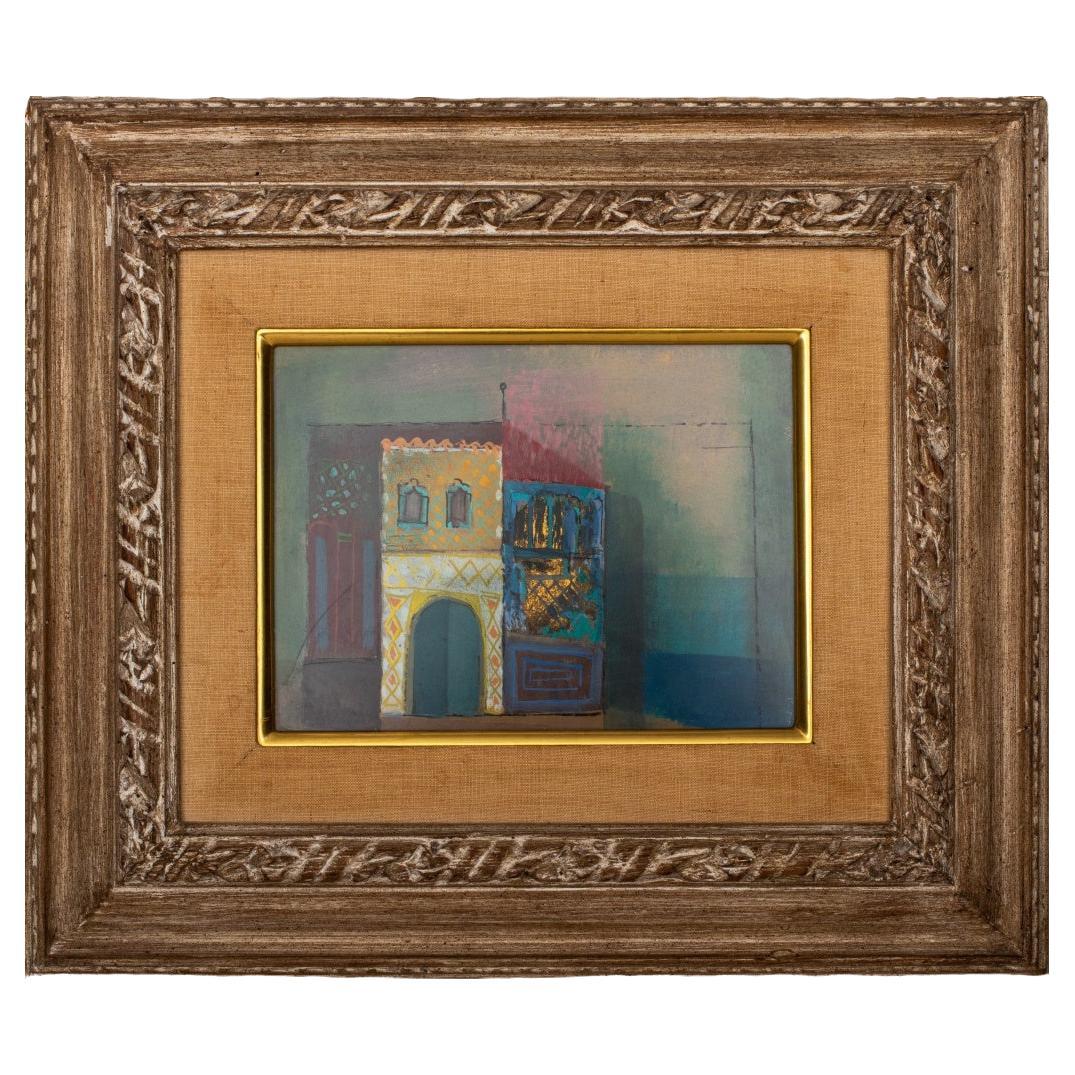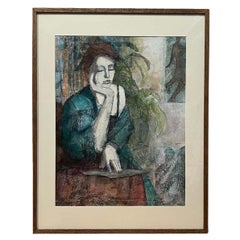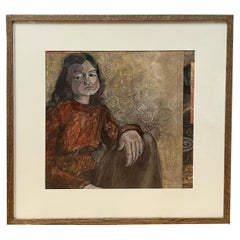
Narrow Mixed Media Painting by Ed Price
View Similar Items
Want more images or videos?
Request additional images or videos from the seller
1 of 6
Narrow Mixed Media Painting by Ed Price
About the Item
- Creator:Ed Price (Painter)
- Dimensions:Height: 55 in (139.7 cm)Width: 13.25 in (33.66 cm)Depth: 2.25 in (5.72 cm)
- Style:Mid-Century Modern (Of the Period)
- Materials and Techniques:
- Place of Origin:
- Period:
- Date of Manufacture:1950s
- Condition:Wear consistent with age and use. Excellent original condition.
- Seller Location:Pasadena, CA
- Reference Number:1stDibs: LU82581915512
About the Seller
4.8
Vetted Seller
These experienced sellers undergo a comprehensive evaluation by our team of in-house experts.
Established in 2000
1stDibs seller since 2006
494 sales on 1stDibs
Typical response time: 2 hours
Associations
20th Century Specialists
More From This SellerView All
- Mixed Media Portrait #1 by Judy PikeLocated in Pasadena, CAJudith Minna Pike December 19, 1942- October 18, 2019 Portrait of a woman sitting with her eyes closed, resting her head on her hand. The texture of this piece is stunning. If y...Category
Late 20th Century American Modern Paintings
MaterialsPaper
$1,000 Sale Price28% Off - Mixed Media Portrait #3 by Judy PikeLocated in Pasadena, CAJudith Minna Pike December 19, 1942- October 18, 2019 This portrait made using a combination of unblending and blending pastels gives this work greater variety, softer edges, and ...Category
Late 20th Century American Paintings
MaterialsPaper
$950 Sale Price32% Off - Mixed Media Portrait #2 by Judy PikeLocated in Pasadena, CAJudith Minna Pike December 19, 1942- October 18, 2019 Mixed media painting of a young thoughful woman, sitting comfortably. Pike used many different brush techniques when painting...Category
1990s American Paintings
MaterialsPaper
$950 Sale Price32% Off - "Woman and Her Cat" Mixed Media Artwork by Rupert PicottBy Rupert PicottLocated in Pasadena, CAThe work is a lively portrayal of an African nude woman in her bedroom. Under the bed, a discontent cat harbors grudges against its owner robbing its yellow cushion. The painting is ...Category
Late 20th Century Senegalese Modern Paintings
MaterialsAcrylic, Paper
- Mixed-Media Abstract Oil on Canvas by Cuban Artist Antonio DojerLocated in Pasadena, CAAn abstraction is a powerful tool that allows artists to question reality, challenge our understanding of the world, and expand our horizons beyond what we can see and touch. In this square format piece combining collage and painting, the artist - a romantic visual poet - is aware that all design is inspired by the Natural that gives life to thoughts in a way that is open to interpretation and subjective experience. Different shapes, round, cubic forms, line and strokes obtained by scratching, textures, words cut presented backward as a mystery that can be pierced. Through a process of cutting, layering, and highlighting, the artist imbues the materials and colors with deeper meaning. At the bottom, a grounded and strong base is strengthened by dark colors and the absence of forms and details. This technique of creating a sense of energy and motion within an otherwise static composition is fully mastered in this artwork. The composition's towering and upright shapes naturally guide the viewer's gaze upwards, creating a dynamic interplay between spiritual themes and verticality. Born in Havana in 1971, Antonio Dojer’s abstract work reflects the colorful culture, vibrant community, and often tumultuous social environment of his native Cuba. Yearning to create and express beyond the political rigidity of his country, Dojer went on to study at the San Alejandro School of Art in Spain...Category
1990s Paintings
MaterialsCanvas
- Departure for Fishing, Watercolor by Ed SotelloLocated in Pasadena, CAWatercolor signed and dated 1965. Walnut frame. Ed Sotello is a graduate of Claremont Graduate University where he earned an MA with an emphasis on drawing and painting the human fig...Category
Mid-20th Century American Mid-Century Modern Paintings
MaterialsWood, Paper
You May Also Like
- Andy Wing Untitled Mixed-Media Painting, 1965Located in Costa Mesa, CAAndy wing untitled mixed-media painting, 1965.Category
20th Century American Modern Paintings
MaterialsCanvas, Wood, Paint
- Norman Conn Mixed Media Construction, 1961By Norman Conn, Louise Nevelson, Zbyněk Sekal 1Located in Garnerville, NYWonderful mixed media by Norman Conn (1932-2003), circa 1961. Signed verso and bearing a partial D'Arcy Gallery, NYC label. Very good condition. Perfectly weathered and masterfully a...Category
Vintage 1960s American Brutalist Paintings
MaterialsMetal
$1,320 Sale Price20% Off - Norman Conn '1932-2003' 1961 Mixed-Media Construction #5By Norman Conn, Louise Nevelson, Zbyněk Sekal 1Located in Garnerville, NYWonderful mixed-media by Norman Conn (1932-2003), circa 1961. Signed verso and bearing a D'Arcy Gallery, NYC label. Very good condition. Perfectly weathered and masterfully assembled...Category
Vintage 1960s American Brutalist Wall-mounted Sculptures
MaterialsMetal
$1,516 Sale Price20% Off - Mixed-Media Painting by Louis SchiavoBy Louis SchiavoLocated in London, GBMixed-media on board on gesso ground, in gouache and oil using the impasto technique. The work also includes areas of collage using applied materials beneath the paint to add depth ...Category
Vintage 1950s Corsican Mid-Century Modern Paintings
MaterialsCanvas
- Mixed Media Painting by Steven ColucciBy John ByardLocated in New York City, NYSteven Colucci’s iconoclastic approach to performance and the visual arts have not only long blurred the boundaries between these disciplines, but have challenged its most basic assumptions. The title of this show references a most rudimentary dance move --the plié --and our assumptions of what to expect in relation to this. Also the suggestion that we can simply press a button and a preconceived outcome will be courteously delivered --a form of prefabricated belief in itself. Steven Colucci’s artwork turns such basic assumptions on their heads. Finding early inspiration in the New York school of abstract expressionists such as Jackson Pollock with his action painting, and then further by his professor --a then young Vito Acconci while studying at the School of Visual Arts, Steven Colucci went from exploring the raw existentialist experimentation of New York’s early painting and performance scenes, to investigating the other end of the spectrum --the rigorously measured and controlled disciplines of pantomime and ballet; studying in Paris under the tutelage of world-famous Marcelle Marceau, and engaging with the concepts of dramatic movement pioneer and intellectual Etienne Decroux. Colucci has explained the difference between the extremes of pantomime and dance as being that pantomime forces movement via an internal capacity --movement directed inward to the core of one’s self --a source requiring extreme mental and physical control. Dance by contrast is an external expression; likewise requiring great precision, although instead an extension of self or sentiment that projects outwardly. While such historical ‘movement’ disciplines serve as foundation blocks for Steven’s artistic explorations, it is the realm in between that he is best known for his contributions --an experimental movement and performance art that simultaneously honors, yet defiantly refutes tradition; rejecting a compartmentalization regarding art and movement, yet incorporating its elements into his own brand of experimental pastiche. Colucci’s performance works manifest as eerily candy-coated and familiar, yet incorporate unexpected jags of the uncanny throughout, exploiting a sort of coulrophobia in the viewer; an exploration of a cumulative artifice that binds human nature against its darker tendencies; highlighting traditions of artifice itself - the fabricated systemologies that necessitate compartmentalization in the first place. It is evident in Steven Colucci’s paintings that he has established a uniquely distinctive pictorial vocabulary; a strong allusion to --or moreso an extension of --his performance works. Colucci’s paintings depict a sort of kinetic spectrum, or as he refers to them “a technical expression of physicality and movement”. Whereas the French performance and visual artist Yves Klein used the human body as a “paint brush” to demarcate his paintings and thereby signify a residue of performance, Colucci’s utilization of nonsensical numbers and number sequences taken from dance scores, as well as heat- induced image abstraction depicting traces of movement likewise inform his vocabulary. In the strand of the choreographed, yet incorporating moments of chance, Colucci’s paintings represent an over arching structure; a rhythm of being and state, yet detail erratic moments --moments that denote a certain frailty --the edge of human stamina. Colucci’s paintings dually represent a form of gestural abstraction --and also the reverse of this --a unique anthropomorphization of varying states of movement – that sometimes present as a temperature induced color field, at others are juxtapositions of movement and depictions of physical gestural images themselves. Colucci’s use of vernacular and found materials such as cardboard evoke his mastery of set design, and also reference a sort of collective experience of urbanity and the ephemeral. Such contradictions seem to permeate not only Steven Colucci’s artwork, but also are reflected in his person – one who grew up in New York’s Bronx during a zeitgeist moment in visual and performing arts in the 1960s – one who shifts with ease from happenings and experiments in New York City, to his meticulously choreographed megaproductions at Lincoln Center or starring in the Paris ballet...Category
2010s Paintings
MaterialsAcrylic
- Mixed Media Painting by Steven ColucciBy Jackson PollockLocated in New York City, NYSteven Colucci’s iconoclastic approach to performance and the visual arts have not only long blurred the boundaries between these disciplines, but have challenged its most basic assumptions. The title of this show references a most rudimentary dance move --the plié --and our assumptions of what to expect in relation to this. Also the suggestion that we can simply press a button and a preconceived outcome will be courteously delivered --a form of prefabricated belief in itself. Steven Colucci’s artwork turns such basic assumptions on their heads. Finding early inspiration in the New York school of abstract expressionists such as Jackson Pollock with his action painting, and then further by his professor --a then young Vito Acconci while studying at the School of Visual Arts, Steven Colucci went from exploring the raw existentialist experimentation of New York’s early painting and performance scenes, to investigating the other end of the spectrum --the rigorously measured and controlled disciplines of pantomime and ballet; studying in Paris under the tutelage of world-famous Marcelle Marceau, and engaging with the concepts of dramatic movement pioneer and intellectual Etienne Decroux. Colucci has explained the difference between the extremes of pantomime and dance as being that pantomime forces movement via an internal capacity --movement directed inward to the core of one’s self --a source requiring extreme mental and physical control. Dance by contrast is an external expression; likewise requiring great precision, although instead an extension of self or sentiment that projects outwardly. While such historical ‘movement’ disciplines serve as foundation blocks for Steven’s artistic explorations, it is the realm in between that he is best known for his contributions --an experimental movement and performance art that simultaneously honors, yet defiantly refutes tradition; rejecting a compartmentalization regarding art and movement, yet incorporating its elements into his own brand of experimental pastiche. Colucci’s performance works manifest as eerily candy-coated and familiar, yet incorporate unexpected jags of the uncanny throughout, exploiting a sort of coulrophobia in the viewer; an exploration of a cumulative artifice that binds human nature against its darker tendencies; highlighting traditions of artifice itself - the fabricated systemologies that necessitate compartmentalization in the first place. It is evident in Steven Colucci’s paintings that he has established a uniquely distinctive pictorial vocabulary; a strong allusion to --or moreso an extension of --his performance works. Colucci’s paintings depict a sort of kinetic spectrum, or as he refers to them “a technical expression of physicality and movement”. Whereas the French performance and visual artist Yves Klein used the human body as a “paint brush” to demarcate his paintings and thereby signify a residue of performance, Colucci’s utilization of nonsensical numbers and number sequences taken from dance scores, as well as heat- induced image abstraction depicting traces of movement likewise inform his vocabulary. In the strand of the choreographed, yet incorporating moments of chance, Colucci’s paintings represent an over arching structure; a rhythm of being and state, yet detail erratic moments --moments that denote a certain frailty --the edge of human stamina. Colucci’s paintings dually represent a form of gestural abstraction --and also the reverse of this --a unique anthropomorphization of varying states of movement – that sometimes present as a temperature induced color field, at others are juxtapositions of movement and depictions of physical gestural images themselves. Colucci’s use of vernacular and found materials such as cardboard evoke his mastery of set design, and also reference a sort of collective experience of urbanity and the ephemeral. Such contradictions seem to permeate not only Steven Colucci’s artwork, but also are reflected in his person – one who grew up in New York’s Bronx during a zeitgeist moment in visual and performing arts in the 1960s – one who shifts with ease from happenings and experiments in New York City, to his meticulously choreographed megaproductions at Lincoln Center or starring in the Paris ballet...Category
2010s Paintings
MaterialsAcrylic
Recently Viewed
View AllMore Ways To Browse
Architectural Archway
Vintage Cutting Board Wood
Retro Wood Cutting Board
Male Antique Portraits
Jenna Snyder Phillips
Jenna Snyder
Antique Male Portraits
18th French Pastel Portrait
American Duchess
Vintage Furniture Lancashire
Cusco School
19th Century Sporting Oil Paintings
Hungarian Painters Oil Painting
Used Furniture Augusta
Painting Of A Woman In Blue Dress
Peru Cuzco School Painting
Haitian Artists
Tennis Wall Art
